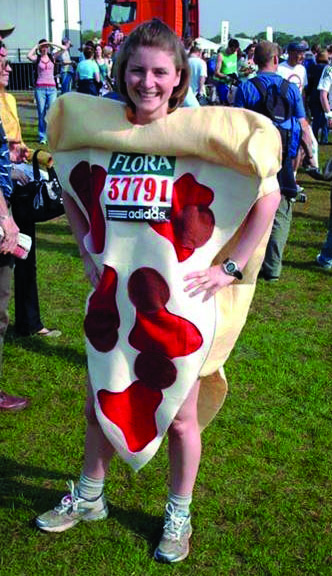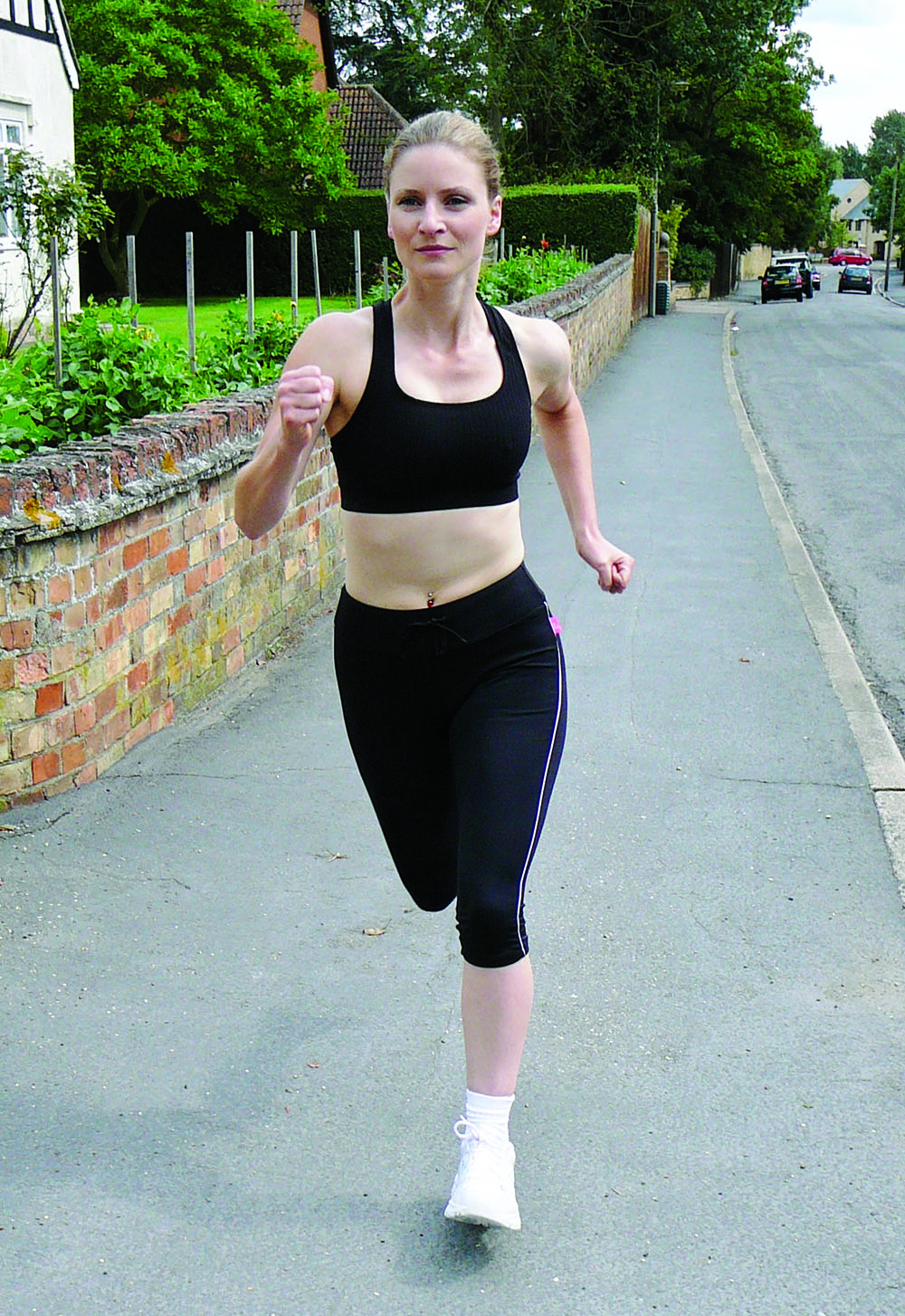Coeliac Ali Walsh looks into preventing the condition that affects those with lower bone mineral density.
When I think about gluten-free, I often only think about food. What can I eat? What’s off-limits? Where can I get a decent pie?
But when I first got diagnosed with coeliac disease back in the nineties, there was a heavy plug for preventing osteoporosis. My dietitian told me to consume 1500mg of calcium a day (well over the recommended daily amount).
At first, I tried eating it, but that proved rather difficult – it felt like I was forever forcing down a pint of milk. In the end, I bought myself some chunky tablets – a chalky sort that seemed to double in size in my mouth – and hoped that would do the trick.
I was also advised to do weight-bearing exercise. To this, I was a bit of a swotty student. I bought every fitness video going and trained as an aerobics instructor. I even ran the London marathon in aid of Coeliac UK dressed as a stuffed crust pizza slice (as one does).
Coeliac UK informs us, ‘People with coeliac disease may have low bone mineral density (BMD), which is what is used to diagnose osteoporosis. Low BMD can affect up to 75% of people when they are diagnosed with coeliac disease at any age’. That’s a huge percentage of coeliacs, and it’s interesting to see that age isn’t a factor.
If you’re a silent coeliac you don’t escape unscathed, either. ‘Even people with few symptoms of coeliac disease can have a significantly lower BMD than the general population. Coeliac UK continues, a risk factor for osteoporosis would be a ‘lack of bone-building exercise, such as walking or running’.
Fast-forward to 2020 and I wish I could say my dedication to exercise and calcium consumption were as saintly as two decades ago. (Clue: it’s not. For a start, they no longer make those tablets.)
So what’s a gal to do?
Kitting yourself out
I decide to put a shout-out on Twitter for experts on osteoporosis. I want to know what sort of exercise I should be doing. And then I wonder: do I actually have anything to wear?
Rummaging through my drawers for some winter workout clothes proves slightly depressing. I find four greying sports bras, a pair of cycling shorts and some socks where the elastic’s gone.
Momentarily my heart lifts at the sight of some three-quarter length leggings, but my joy is short-lived: they wind hideously down my body as I move and allow a roll of belly fat to flop out. Ugh.
One shopping trip later, I try on my new attire and pull a hoodie up over my nose. ‘Mummy looks like a gimp! my husband tells our daughter. An unrepeatable conversation follows.
To supplement or not?
Meanwhile, my Twitter request has borne fruit: I hear back from Daisy Connor, a nutritional therapist at City Survivor. She tells me it’s not just calcium that coeliacs need to worry about.
‘Coeliacs are advised to supplement because of intestinal nutrient malabsorption – especially where diagnosis has been slow.’ (Coeliacs who’ve gone for decades while unwittingly eating gluten, take note.)
‘Many other nutrients are also essential for bones. These include vitamin D (a common deficiency in the UK), vitamin K2 (lacking from a typical diet here), boron, magnesium and silicon.’ And if you’re wondering how to get all of those nutrients, Daisy suggests ‘high-quality multi-nutrient supplementation of nutrients in their active forms.’
I think back to my first year after diagnosis. Two consecutive Vitamin D tests showed a deficiency. I wonder if I should take a pill, as Daisy recommends, or get some more sun. Admittedly, the latter might be rather difficult at this time of year, but not impossible if I do a gym session in the park on a crisp winter’s day. That is, if I can summon the willpower to go. I decide to give myself no choice and google ‘personal trainers near me’.
I search for more evidence that coeliacs should be doing exercise.
‘Being physically active has a wide range of benefits for both physical and mental health, states Ruth Passmore, the Coeliac 8. Health Policy Lead. Anxiety UK agrees: ‘Supporting someone with coeliac disease is so important, preventing isolation, depression and combating anxiety. Evidence shows that being physically active can protect people against depression and anxiety as it causes chemical changes in the brain which can positively alter mood.’
All of this sounds very promising. If other health problems can be alleviated by exercise, I wonder if my shoulder issues can also be resolved and stop me from forking out squillions on osteopaths and chiropractors. Just as I’m turning that thought over, my e-mail pings: a local PT is offering weekly sessions in my nearby park.
I wonder how on earth he’ll react when he finds out my needs. My assumption is that most people go to him to lose weight and tone up. How many times has he been asked, ‘I’d like to prevent osteoporosis and sort my shoulder out’?
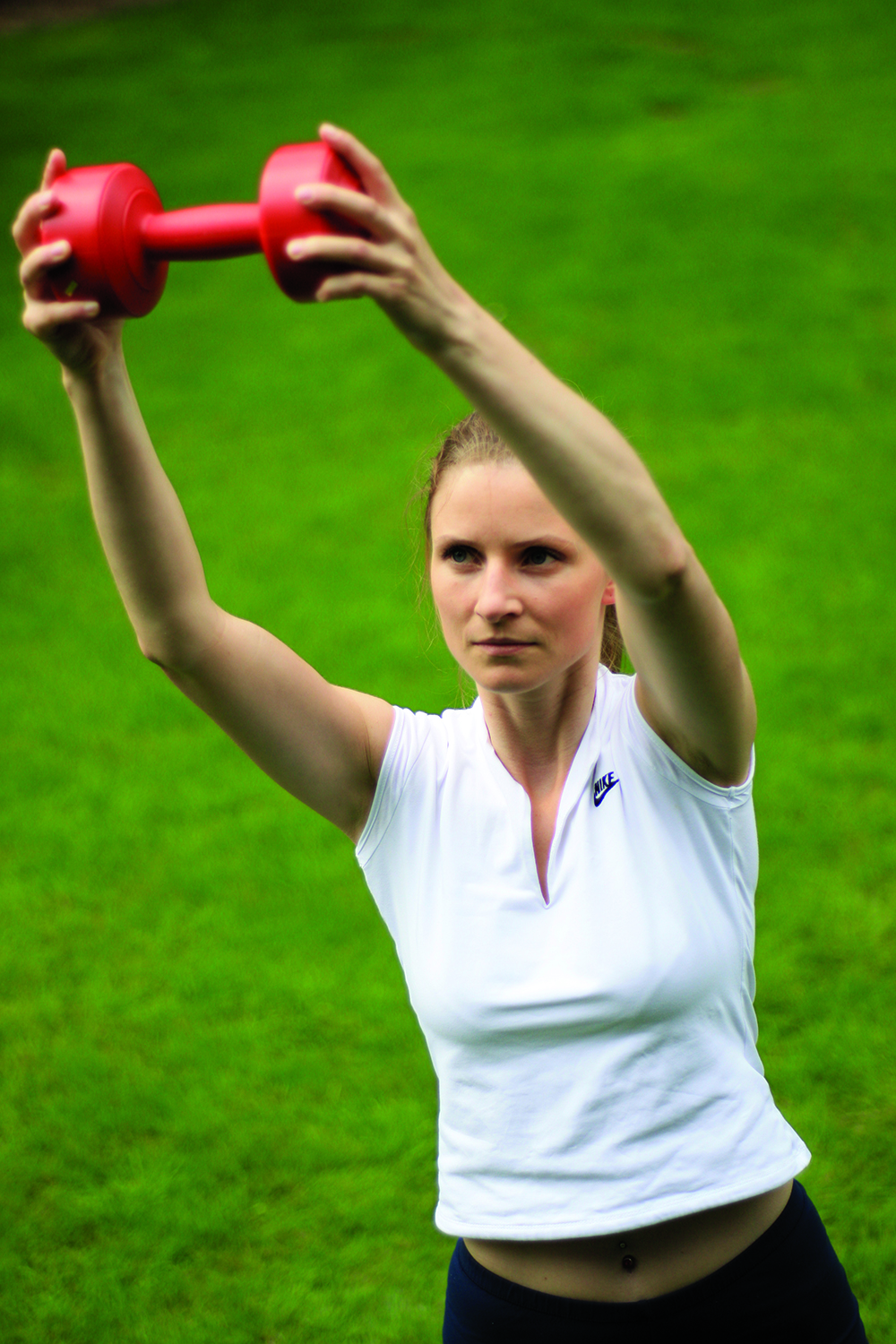
Exercise, exercise, exercise
I also want to know what sort of exercise I’m meant to be doing. The Royal Osteoporosis Society has some suggestions. The guidance we’d give for people with coeliac disease is the same as for the general population. I find this encouraging. For once, coeliacs are being included with the masses.
The ROS continues, ‘We now know that the two best types of exercise to promote bone strength are muscle-strengthening exercise and weight-bearing exercise with impact.’ (I make a note to tell the PT.) ‘Where people are fit and well enough, we would encourage moderate exercises (where a moderate force is created on the bones by pushing off and returning to the ground, usually with both feet) up to 50 times on most days (e.g. 50 skips).’
If this sounds fairly intense, you may be relieved to know my current attempts somehow fall short.
But what about people who’ve already been diagnosed with osteoporosis or have broken bones? The ROS states, ’Where people are fit and well enough, we encourage people to do more rather than less, and are trying to remove the fear around exercise for people who have broken bones in the past.’
Clearly, one ought not to attempt a running sprint immediately after a hip replacement. But where’s a good place to begin? The ROS has different types of exercise showcased in a handy chart on their website, which they’ve kindly agreed I can share (see below).
I must admit, I’m rather surprised at the inclusion of stamping, in that it can be considered an activity one does repeatedly. But as with many things, I feel the approach that warrants merit is, ‘take what you like and leave the rest’. A few star jumps are just the thing to get one going on a cold English morning, and it seems reasonable to follow them up with a spot of jogging.
When I meet the PT, he has some fantastic ideas for my first workout, involving parallettes and a giant hooped ground ladder (they’re worth googling, I promise). An hour later, the session has left me elated and I practically skip home, wondering why I ever stopped exercising properly.
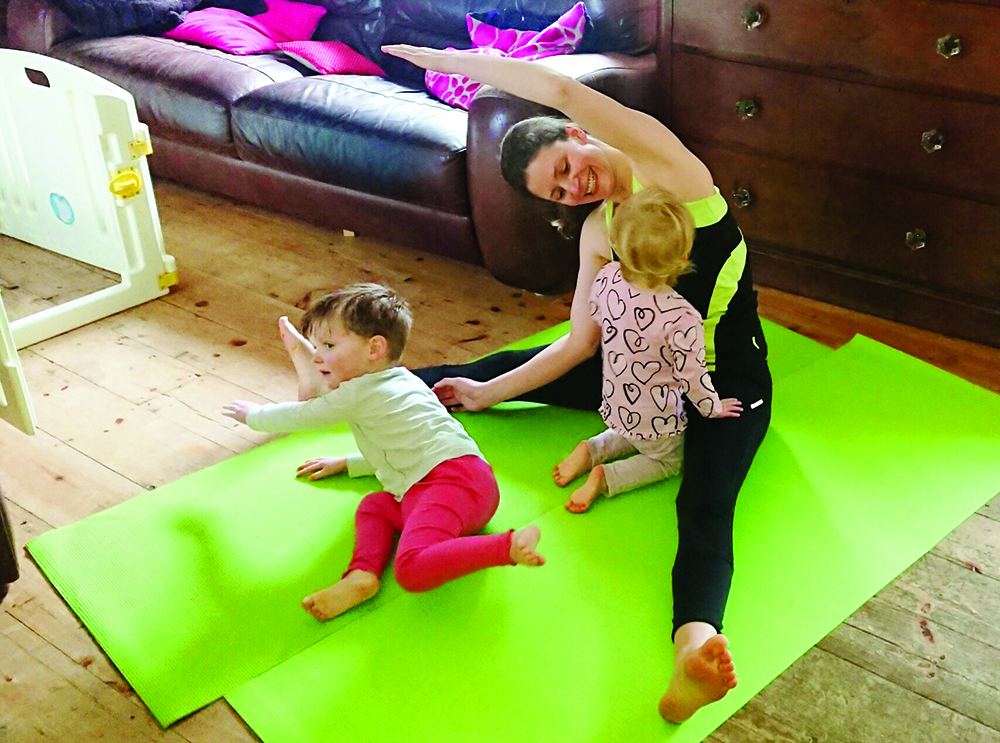
Cover the bases
So what’s the best way to help prevent osteoporosis? Coeliac UK recommends getting 1,000mg per day of calcium (a bit easier than the 1,500mg I mentioned earlier, but still 300mg more than the general population). This can be found in a variety of foods including milk (both dairy and soya), sardines and sesame seeds. There’s a downloadable factsheet on the Coeliac UK website with more foods, including advice for vegans.
As for supplements, the NHS recommends ’vitamin and mineral supplements, at least for the first months after your [coeliac] diagnosis while your digestive system repairs itself.’ As well as this, everyone should ’consider taking a daily supplement containing 10 micrograms of vitamin D during autumn and winter.’
No specific exercise is given for coeliacs, but its importance is made very clear. So choose your favourite way to help build up those bones and who knows, maybe we’ll just spot one another doing some stamping in the park.
What is low, moderate and high impact exercise?*
Lower impact
Walks, brisk walking, marching, stair climbing, gentle heel drops, stamping
Moderate impact
Highland dancing, jogging or running, team and racket sports, skipping and hopping, low-level jumping, vigorous heel drops and stamping
High impact
Basketball, volleyball, track events, star jumps tuck jumps, high-level jumps
*Thanks to the ROS
Exercising, no matter what
If you’re worried you’re too old for exercising, don’t have the time or can’t fit it in around your kids, take comfort in these photos.
You don’t need expensive equipment (a run will do), you can get your toddlers to join in with a (short) DVD, and you can be a septuagenarian and still lift weights (yep, that’s my mum). Whatever you choose, enjoy!
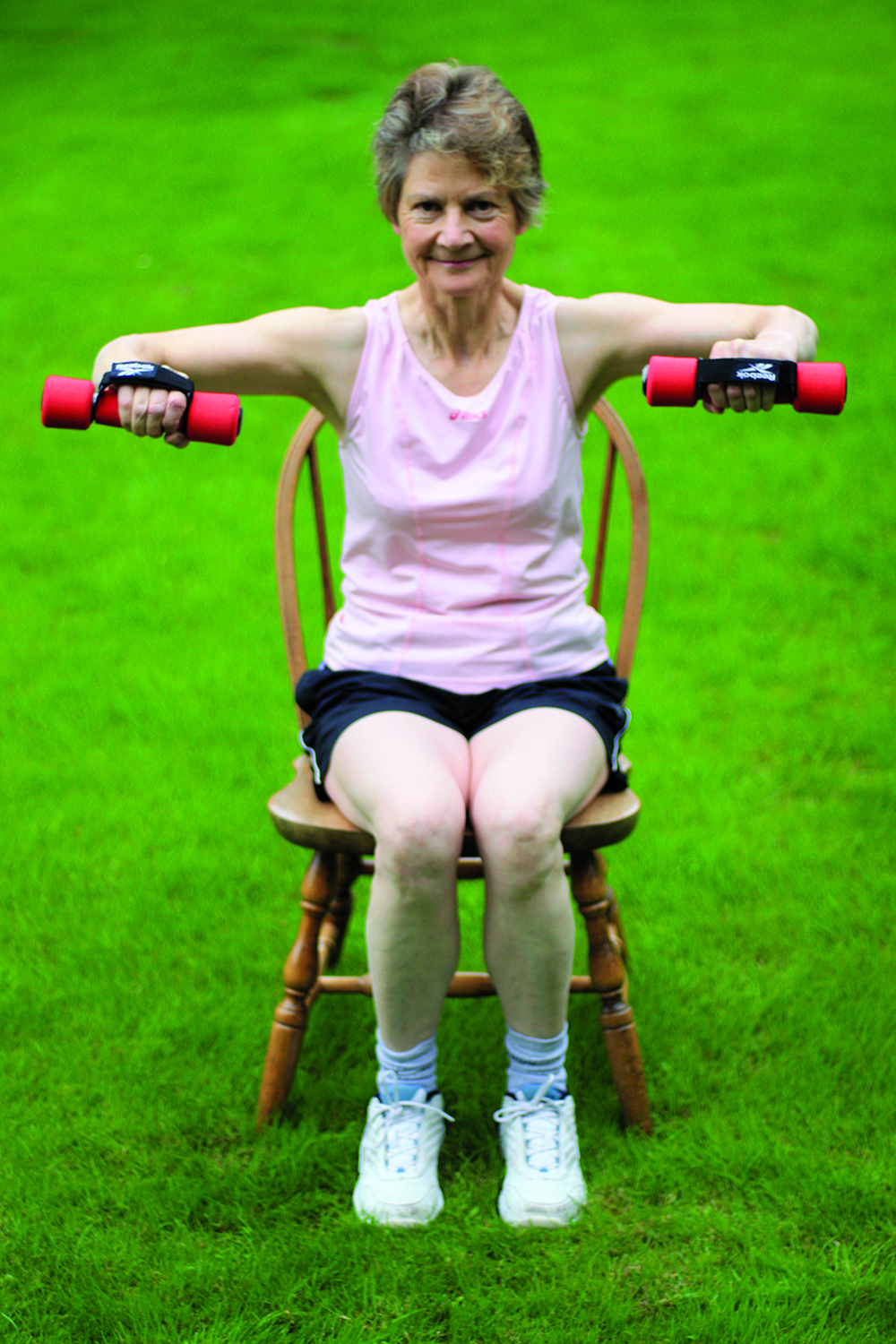
Sources and further information
- Coeliac UK
- NHS
- The Royal Osteoporosis Society
- Daisy Connor, Nutritional Therapist at City Survivor
- Anxiety UK
As featured in the February 2020 issue of Gluten-Free Heaven magazine

